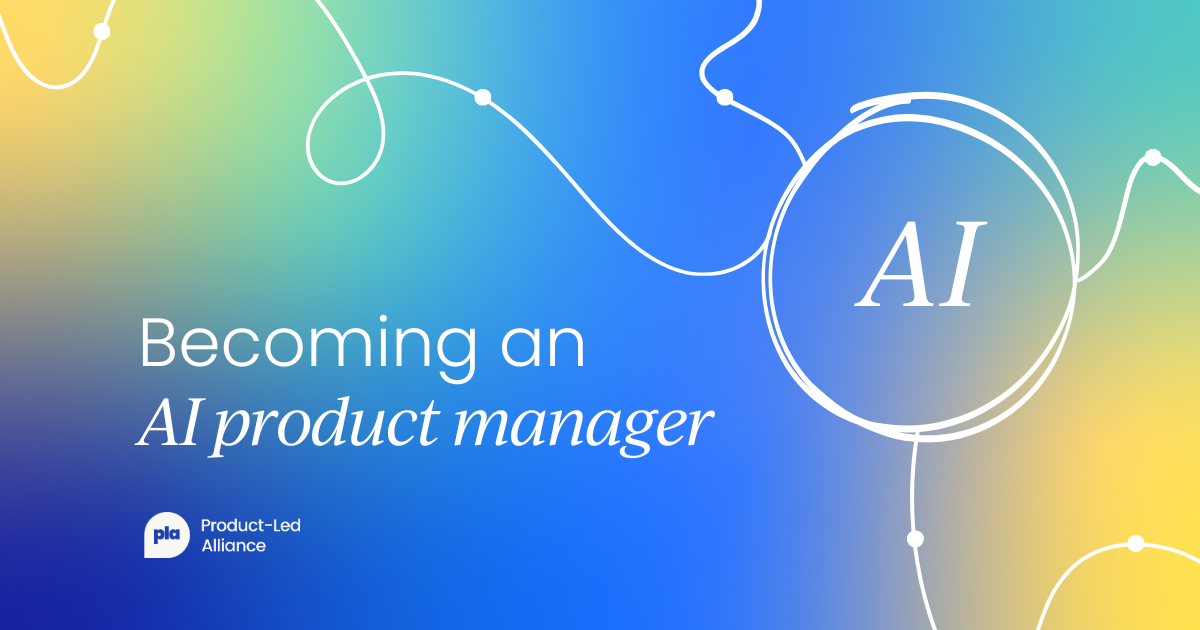Building an AI product is one of the most exciting things for today’s product leaders. At its core, it’s about harnessing cutting-edge technology to solve real user problems at scale.
However, working at the forefront of technology has taught us one critical lesson: the key to a successful AI product isn’t the AI — it’s the clarity of purpose and relentless focus on the user.
AI offers immense potential to transform industries, redefine user experiences, and unlock new value streams. Yet, the journey from concept to successful launch is filled with pitfalls.
The teams may get distracted by the dizzying array of AI tools, frameworks, and models, losing sight of the fundamental questions:
- What are we solving for?
- How will this make the user’s life better?
Here’s a guide to building AI products with purpose and precision that would serve as a guide next time you work on building a 0-1 product or a new product feature.
1. Start with the problem, not the AI
In AI product development, there’s a temptation to start with the technology.
A breakthrough model, a novel algorithm, or a promising dataset becomes the focal point, and the search for a problem to solve comes second.
This approach is a recipe for failure.
The most successful AI products started with one simple yet powerful exercise: writing down the user’s problem in plain language.
In my previous role, I explored integrating an AI chatbot into our customer support ecosystem.
Initially, the excitement was around the model’s capabilities – handling multiple queries, multilingual support, and adaptive learning. However, real success came only after we reframed the problem: Users abandon support chats due to frustration with long wait times and ineffective responses.
Instead of pushing AI for AI’s sake, we focused on reducing wait times, improving query resolution rates, and making responses feel more human. This shift transformed adoption rates and reinforced the idea that problem-first thinking leads to impactful AI solutions.
The key takeaway: even the most advanced AI is useless if it doesn't solve a real user problem.
Always start by deeply understanding the user's needs and frustrations. This shift is more than semantic – it ensures that every decision (whether it’s about data collection, feature prioritization, or model tuning) stays anchored in solving a tangible problem users care about.

2. Map the user journey before building the model
AI products succeed or fail not in the lab but in users' hands. To ensure success, map the end-to-end user journey before writing a single line of code.
Discovery
How will users find out about your product?
If AI is solving an invisible pain point, like supply chain optimization, you may need to communicate its value in a way that the user understands and directly connects to their goals, whether it’s saving time, reducing costs, or improving outcomes.
Onboarding
Trust is the most critical recipe for successful products.
A poorly executed onboarding experience – especially one that overwhelms users with technical jargon – can erode confidence before the first interaction. Instead, focus on your user education and personalized guidance.
Engagement
What does the product experience look like? AI outputs need to be actionable and understandable. The hallmark of a great AI product is its ability to transform complexity into simplicity.
Feedback
AI thrives on iteration. Building intuitive mechanisms for feedback is non-negotiable.
For instance, in a recommendation system, “Was this helpful?” prompts can provide valuable data to refine models. A feedback loop is not optional but a critical component of building trust and alignment with user needs.
While designing smart AI nudges for checkout completion, we noticed that users often abandoned their carts before completing a purchase.
Traditional reminders weren’t enough after the drop-off, so we developed an AI-driven system that analyzes user behavior to predict when a gentle nudge (like a discount or free shipping offer) would be most effective.
Instead of blasting discounts indiscriminately, we personalized reminders based on engagement and cohort-level user behavior. This reduced cart abandonment rates while preserving margins.

3. Simplify before you scale
AI solutions often generate complex outputs that may feel impressive to you as a Product Manager, but they are overwhelming to users. The challenge is to distill complexity into simplicity.
Prioritize a single core feature at launch
Start with one user problem and solve it exceptionally well.
For instance, assuming you are building an AI-powered assistant, you need to focus solely on one key feature, such as improving first response times. Once that core capability delivers value, you can expand to other areas like sentiment analysis and proactive suggestions.
Resist the urge to showcase everything the AI can do. A flood of recommendations, insights, or actions can confuse users and dilute the perceived value.
Explain the “why” behind the magic
AI can feel like a black box to users. Providing clear, concise explanations for why the system made a particular suggestion builds trust and enhances engagement.
At an e-commerce company, I was developing an AI-powered customer support assistant. The vision was ambitious – automating live chat, handling order inquiries, processing refunds, and even detecting fraud.
However, during early testing, customer service agents found the AI overwhelming, struggling to navigate its many features efficiently.
We decided to simplify.
Instead of tackling everything at once, we focused on a single high-impact function: automating responses for common order status inquiries, which accounted for 60% of customer service tickets.
By perfecting this feature – ensuring seamless handoffs to human agents and refining response accuracy – we built trust with both customers and support teams. With this strong foundation in place, we gradually expanded our capabilities.
Start simple, solve one core problem, and scale with purpose.

4. Data is the foundation: Invest early and intelligently
It's an old but golden saying that AI is only as good as the data it learns from. But data collection isn’t just about volume – it’s about relevance and diversity.
Start with the right questions
Focus data collection on what truly matters to the user's problem. If you’re building a fraud detection model, the data needs to include edge cases like rare patterns of fraud, not just typical transactions.
Design feedback loops
Build mechanisms for users to provide implicit and explicit feedback. For example, a thumbs-up/thumbs-down system in content recommendations helps refine models over time.
In our recent research paper, we identified that LLMs, while creating the persona of a candidate, may favor candidates from elite universities.
Now, if you are building an AI-driven hiring system using LLM without appropriate guardrails, the model may disproportionately favor candidates from certain universities due to historical hiring patterns.
If left unchecked, this could reinforce biases instead of mitigating them. This highlights the importance of getting feedback from and analyzing your model’s dataset.

5. Measure success through impact, not metrics
AI teams often obsess over internal metrics like precision, recall, or latency. While these are important, they’re not what defines success. The ultimate metric for an AI product is the user’s success.
Our team built an AI-powered e-commerce recommendation system. Initially, we focused on the precision and recall of recommendations as the primary success metric.
However, deeper analysis revealed that despite the decent CTR, conversion was below expectations as CTRs weren’t translating to actual purchases. We shifted our focus to downstream impact – measuring and optimizing for conversion rates.
Refining AI recommendations based on purchase intent rather than model accuracy increased meaningful conversions by 20%, proving that real impact matters more than surface-level metrics.
6. Avoid the AI hype trap
The AI landscape is crowded with buzzwords and overhyped solutions.
As a product leader, it’s critical to cut through the noise and focus on what matters: solving user problems in the simplest, most effective way possible.
Ask yourself these questions to keep you on track:
- Does this solution simplify the user’s life?
- How much better do you think an AI/ML solution can be?
- How expensive is the ML solution in both the short- and long-term?
- How does this feature align with our long-term vision for the user experience?
- If we removed the AI, would the product still deliver value?
By staying focused on the user, you can ensure that AI adds tangible value instead of becoming a distraction.

7. Leading AI Product Teams
Building an AI product isn’t just a technical challenge—it’s a leadership challenge. As a product leader, your role is to ensure:
- A clear vision: Articulate not just the what but the why. “Why” serves as a powerful guide to keep the entire team aligned with the key mission of the product and company.
- Foster collaboration: Create a culture where these teams work seamlessly together. Without effective collaboration among diverse team members across UX research, data science, engineering, and product, delivering a successful AI product could be just a fantasy.
- Hold the line on simplicity: Clarity in user stories, data requirements, and feature designs is the core recipe for creating successful AI products.
Leading an AI team requires more than just technical expertise – it demands seamless collaboration between product managers, engineers, data scientists, and UX designers.
One challenge we’ve faced is that engineers often focus on model accuracy while designers prioritize usability.
To bridge this gap, we established shared KPIs that balanced AI performance with user experience. By holding regular “user impact” meetings, we ensured cross-functional alignment and fostered an AI culture where usability and performance go hand in hand.
Conclusion
AI will continue to reshape products, and the most successful AI products will be those that balance technological sophistication with a deep understanding of user needs.
As product leaders, we must champion clarity, focus, and simplicity, as these are the core recipes for innovation and creating a lasting impact.
Discuss this article with like-minded product managers – join our community of 13k+ product leaders.



 Follow us on LinkedIn
Follow us on LinkedIn








